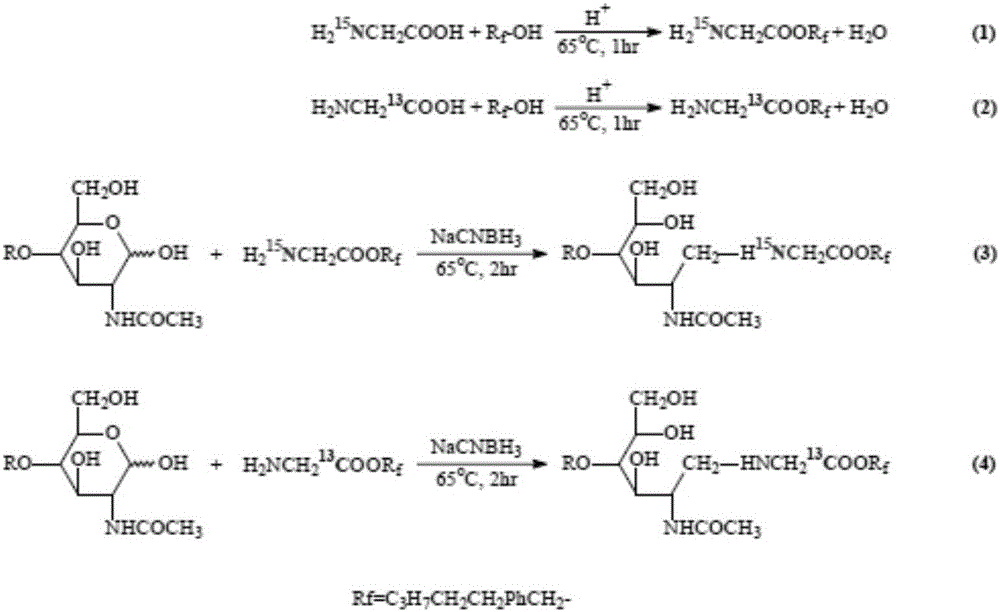Quantitative analysis method capable of simultaneously realizing enrichment and similar-isobar labeling of polysaccharides
A near-isobaric labeling and quantitative analysis technology, applied in the fields of systems biology and glycomics, can solve the problems of complex polysaccharide structure, no enrichment and quantitative labeling, low abundance of glycosylated proteins, etc., to achieve enhanced enrichment efficiency, improved hydrophobicity and electrospray ionization efficiency, and the effect of high-accuracy qualitative and quantitative analysis
- Summary
- Abstract
- Description
- Claims
- Application Information
AI Technical Summary
Problems solved by technology
Method used
Image
Examples
Embodiment
[0029] A quantitative analysis method for simultaneous enrichment and near-isobaric labeling of polysaccharides, such as figure 1 shown, including the following steps:
[0030] (1) Two groups of polysaccharides with different physiological or pathological conditions were used as the control group and the disease group respectively, and all aminations of N-acetylglucosamine aldehyde groups were labeled with the same gravity. One group of polysaccharides was labeled with sodium cyanoborohydride (NaCNBH 3 ) and H 2 15 NCH 2 COOR f labeling, another group of polysaccharides with sodium cyanoborohydride and H 2 NCH 2 13 COOR f mark, where R f for C 3 f 7 CH 2 CH 2 PhCH 2 -, respectively marked as -CH 2 15 NHCH 2 COOR f and -CH 2 NHCH 2 13 COOR f , where R f for C 3 f 7 CH 2 CH 2 PhCH 2 -, the mass difference of the polysaccharide containing the fluorine label after its labeling is 6.32mDa; Carry out the reaction process and the condition of isobaric label...
PUM
 Login to View More
Login to View More Abstract
Description
Claims
Application Information
 Login to View More
Login to View More - R&D
- Intellectual Property
- Life Sciences
- Materials
- Tech Scout
- Unparalleled Data Quality
- Higher Quality Content
- 60% Fewer Hallucinations
Browse by: Latest US Patents, China's latest patents, Technical Efficacy Thesaurus, Application Domain, Technology Topic, Popular Technical Reports.
© 2025 PatSnap. All rights reserved.Legal|Privacy policy|Modern Slavery Act Transparency Statement|Sitemap|About US| Contact US: help@patsnap.com


